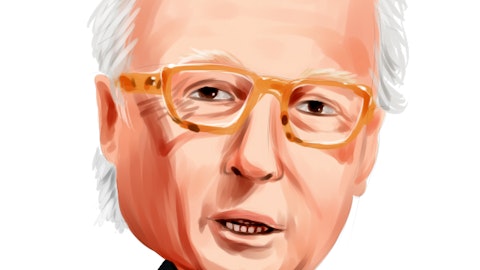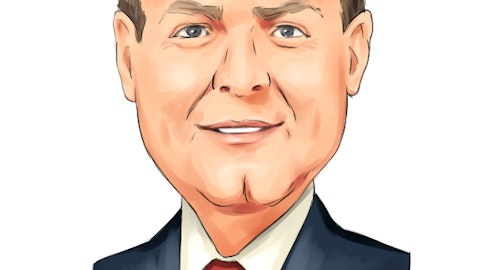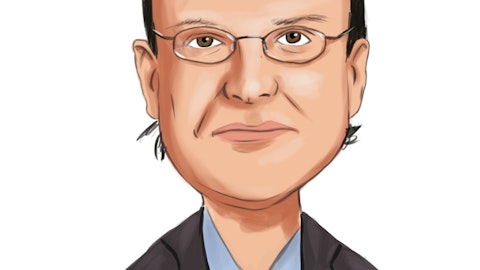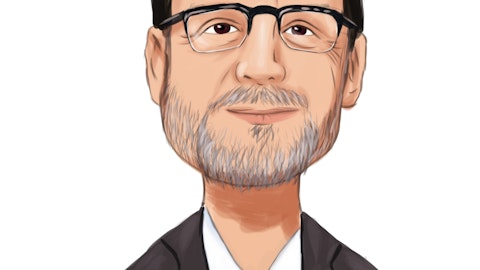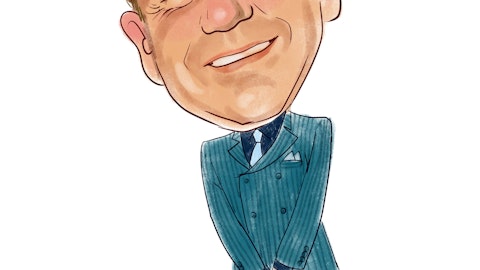But again, I think as we look at the markets that we’re in, and we do believe as this process unfolds that we’re kind of transitioning out of for trophy premier properties out of this broader existential question around office into an economic cycle. And so what goes down, we think our markets like Atlanta and Austin will be the first markets to recover as they did after the pandemic, after the GFC and we would expect that to continue. So medium and longer term, we remain very optimistic that the quality of properties that we own and the locations that we own, we’re going to drive net effective rents up into the right over the broader period of time.
Michael Lewis: Great. And then Colin, you talked about cap rates and this bid-ask spread. So I guess it poses two questions, right, on the buy and on the sell. So first, on the sell, now that Houston is leased do you market that asset? Or do you wait for capital markets to kind of sort out? And then on the other side of it, you weren’t acquisitive in 2022, but do you think this situation maybe offers an opportunity to buy something or I don’t know, maybe your focus is still more on development.
Colin Connolly: Yes. Well, the great thing about the strength of our balance sheet is — we’ve got a lot of optionality, and we don’t need to sell anything, because the balance sheet is so strong. So if an opportunity presents itself to sell something for more than we think it’s worth, we’ll certainly look at it. But I would say more broadly speaking, we’re looking at dispositions as a potential source of capital if we elect to pursue new investments to keep the balance sheet relatively leverage neutral. But at the same time, I do think we’re going to see opportunities this year. We were very patient last year thinking that prices would look better in 2023. And I think that’s going to hopefully prove correct. And I think the closer I think, some owners get to having to either fund leasing costs to preserve their asset value or deal with loan maturities.
I think you’re going to see that for some transactions that might be in the latter half of the year. But when those arise, we’ll be poised and ready to hopefully capitalize on some compelling opportunities.
Michael Lewis: Hey, great. Thank you.
Operator: Our next question will come from Dave Rogers with Baird. You may now go ahead.
Unidentified Participant: Hey, guys. It’s Nick on for Dave. Maybe starting off with Colin in the same vein on investment sales and/or this portfolio positioning through your recycling efforts over the past couple of years, you’ve kind of downsized exposure and say, like our Charlotte older vintage assets. That’s also kind of increased your exposure to some of the more tech-heavy metros, such as like Atlanta and Austin. I guess just kind of how are you viewing the portfolio on a geographic positioning today? And like what markets are you looking to gain more exposure over time?
Colin Connolly: Yes. Good question. And I’d say the recycling over the last couple of years was less focused on kind of the geographic percentages and more focused on what we think is the most important trend, which is the flight to quality. And so we sold over $1 billion of older vintage higher CapEx type properties that I described have got growing obsolescence and reinvested that capital into terrific trophy properties like 725 Ponce and the railyard in Charlotte. But as we look up after completing that recycling, you’re right, we’re, I’d say, a little under representative in some markets that we like a lot, like Charlotte, like Dallas, and so we’ll certainly be looking hard to find attractive opportunities to grow our exposure in those markets.
But we continue to like Atlanta and Austin and others and despite a slowdown in tech activity, again, our portfolio is incredibly well positioned and derisked in those markets. And if the right opportunities arise, we’ll certainly capitalize and continue to grow in any of our markets.

